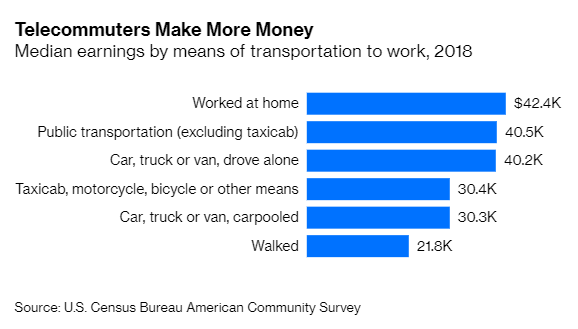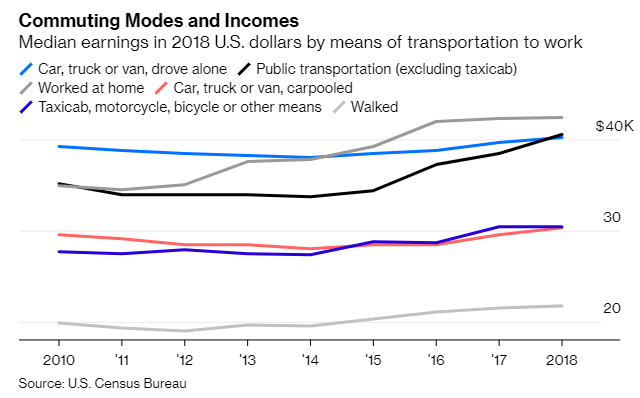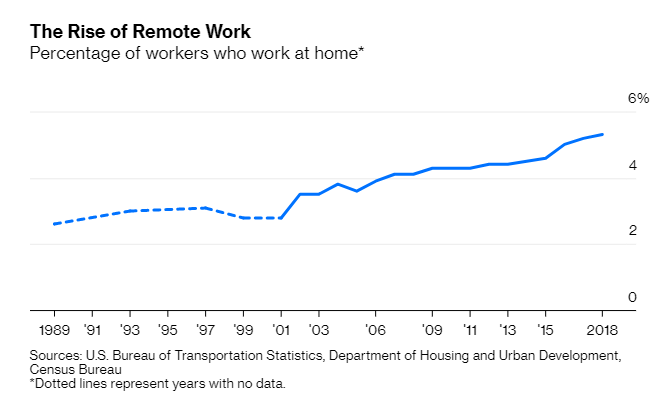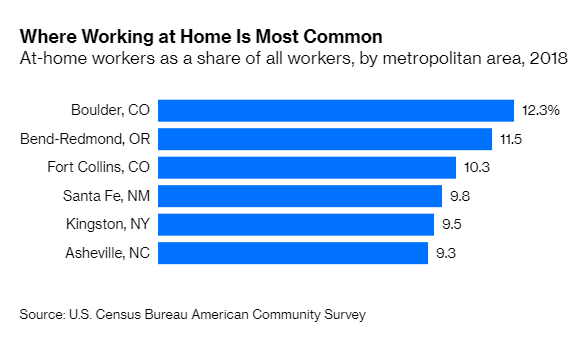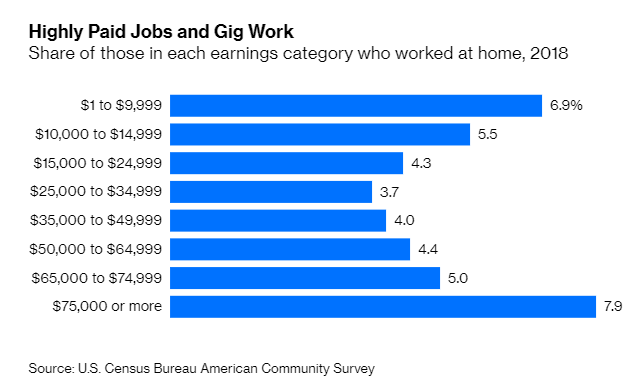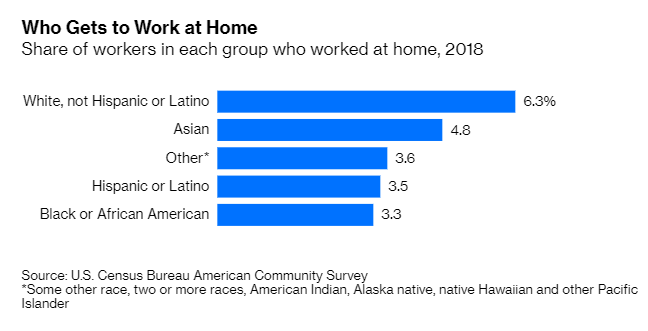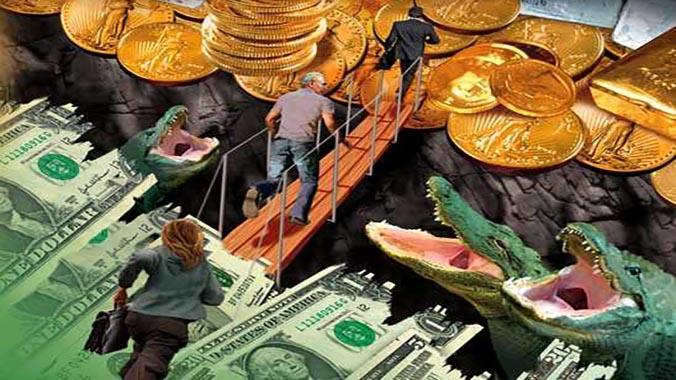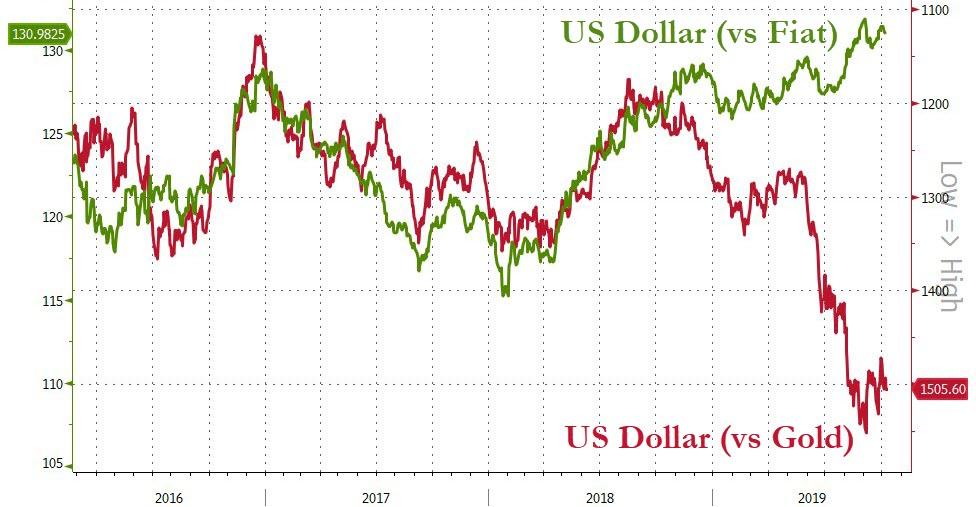National (In)Security: The Hypersonic Road To Hell
Authored by Rajan Menon via TomDispatch.com,
Why Arms Races Never End
Hypersonic weapons close in on their targets at a minimum speed of Mach 5, five times the speed of sound or 3,836.4 miles an hour. They are among the latest entrants in an arms competition that has embroiled the United States for generations, first with the Soviet Union, today with China and Russia. Pentagon officials tout the potential of such weaponry and the largest arms manufacturers are totally gung-ho on the subject. No surprise there. They stand to make staggering sums from building them, especially given the chronic “cost overruns” of such defense contracts — $163 billion in the far-from-rare case of the F-35 Joint Strike Fighter.
Voices within the military-industrial complex — the Defense Department; mega-defense companies like Lockheed Martin, Northrup Grumman, Boeing, and Raytheon; hawkish armchair strategists in Washington-based think tanks and universities; and legislators from places that depend on arms production for jobs — insist that these are must-have weapons. Their refrain: unless we build and deploy them soon we could suffer a devastating attack from Russia and China.
The opposition to this powerful ensemble’s doomsday logic is, as always, feeble.
The (Il)logic of Arms Races
Hypersonic weapons are just the most recent manifestation of the urge to engage in an “arms race,” even if, as a sports metaphor, it couldn’t be more off base. Take, for instance, a bike or foot race. Each has a beginning, a stipulated distance, and an end, as well as a goal: crossing the finish line ahead of your rivals. In theory, an arms race should at least have a starting point, but in practice, it’s usually remarkably hard to pin down, making for interminable disputes about who really started us down this path. Historians, for instance, are still writing (and arguing) about the roots of the arms race that culminated in World War I.
The arms version of a sports race lacks a purpose (apart from the perpetuation of a competition fueled by an endless action-reaction sequence). The participants just keep at it, possessed by worst-case thinking, suspicion, and fear, sentiments sustained by bureaucracies whose budgets and political clout often depend on military spending, companies that rake in the big bucks selling the weaponry, and a priesthood of professional threat inflators who merchandise themselves as “security experts.”
While finish lines (other than the finishing of most life on this planet) are seldom in sight, arms control treaties can, at least, decelerate and muffle the intensity of arms races. But at least so far, they’ve never ended them and they themselves survive only as long as the signatories want them to. Recall President George W. Bush’s scuttling of the 1972 Anti-Ballistic Missile Treaty and the Trump administration’s exit from the Cold War-era Intermediate-Range Nuclear Forces (INF) Treaty in August. Similarly, the New START accord, which covered long-range nuclear weapons and was signed by Russia and the United States in 2010, will be up for renewal in 2021 and its future, should Donald Trump be reelected, is uncertain at best. Apart from the fragility built into such treaties, new vistas for arms competition inevitably emerge — or, more precisely, are created. Hypersonic weapons are just the latest example.
Arms races, though waged in the name of national security, invariably create yet more insecurity. Imagine two adversaries neither of whom knows what new weapon the other will field. So both just keep building new ones. That gets expensive. And such spending only increases the number of threats. Since the end of the Cold War in 1991, U.S. military spending has consistently and substantially exceeded China’s and Russia’s combined. But can you name a government that imagines more threats on more fronts than ours? This endless enumeration of new vulnerabilities isn’t a form of paranoia. It’s meant to keep arms races humming and the money flowing into military (and military-industrial) coffers.
One-Dimensional National Security
Such arms races come from the narrow, militarized definition of “national security” that prevails inside the defense and intelligence establishment, as well as in think tanks, universities, and the most influential mass media. Their underlying assumptions are rarely challenged, which only adds to their power. We’re told that we must produce a particular weapon (price tag be damned!), because if we don’t, the enemy will and that will imperil us all.
Such a view of security is by now so deeply entrenched in Washington — shared by Republicans and Democrats alike — that alternatives are invariably derided as naïve or quixotic. As it happens, both of those adjectives would be more appropriate descriptors for the predominant national security paradigm, detached as it is from what really makes most Americans feel insecure.
Consider a few examples.
Unlike in the first three decades after World War II, since 1979 the average U.S. hourly wage, adjusted for inflation, has increased by a pitiful amount, despite substantial increases in worker productivity. Unsurprisingly, those on the higher rungs of the wage ladder (to say nothing of those at the top) have made most of the gains, creating a sharp increase in wage inequality. (If you consider net total household wealth rather than income alone, the share of the top 1% increased from 30% to 39% between 1989 and 2016, while that of the bottom 90% dropped from 33% to 23%.)
Because of sluggish wage growth many workers find it hard to land jobs that pay enough to cover basic life expenses even when, as now, unemployment is low (3.6% this year compared to 8% in 2013). Meanwhile, millions earning low wages, particularly single mothers who want to work, struggle to find affordable childcare — not surprising considering that in 10 states and the District of Columbia the annual cost of such care exceeded $10,000 last year; and that, in 28 states, childcare centers charged more than the cost of tuition and fees at four-year public colleges.
Workers trapped in low-wage jobs are also hard-pressed to cover unanticipated expenses. In 2018, the “median household” banked only $11,700, and households with incomes in the bottom 20% had, on average, only $8,790 in savings; 29% of them, $1,000 or less. (For the wealthiest 1% of households, the median figure was $2.5 million.) Forty-four percent of American families would be unable to cover emergency-related expenses in excess of $400 without borrowing money or selling some of their belongings.
That, in turn, means many Americans can’t adequately cover periods of extended unemployment or illness, even when unemployment benefits are added in. Then there’s the burden of medical bills. The percentage of uninsured adults has risen from 10.9% to 13.7% since 2016 and often your medical insurance is tied to your job — lose it and you lose your coverage — not to speak of the high deductibles imposed by many medical insurance policies. (Out-of-pocket medical expenses have, in fact, increased fourfold since 2007 and now average $1,300 a year.)
Or, speaking of insecurity, consider the epidemic in opioid-related fatalities (400,000 people since 1999), or suicides (47,173 in 2017 alone), or murders involving firearms (14,542 in that same year). Child poverty? The U.S. rate was higher than that of 32 of the 36 other economically developed countries in the Organization for Economic Cooperation and Development.
Now ask yourself this: how often do you hear our politicians or pundits use a definition of “national security” that includes any of these daily forms of American insecurity? Admittedly, progressive politicians do speak about the economic pressures millions of Americans face, but never as part of a discussion of national security.
Politicians who portray themselves as “budget hawks” flaunt the label, but their outrage over “irresponsible” or “wasteful” spending seldom extends to a national security budget that currently exceeds $1 trillion. Hawks claim that the country must spend as much as it does because it has a worldwide military presence and a plethora of defense commitments. That presumes, however, that both are essential for American security when sensible and less extravagant alternatives are on offer.
In that context, let’s return to the “race” for hypersonic weapons.
Faster Than a Speeding Bullet
Although the foundation for today’s hypersonic weaponry was laid decades ago, the pace of progress has been slow because of daunting technical challenges. Developing materials like composite ceramics capable of withstanding the intense heat to which such weapons will be exposed during flight leads the list. In recent years, though, countries have stepped up their games hoping to deploy hypersonic armaments rapidly, something Russia has already begun to do.
China, Russia, and the United States lead the hypersonic arms race, but others — including Britain, France, Germany, India, and Japan — have joined in (and more undoubtedly will do so). Each has its own list of dire scenarios against which hypersonic weapons will supposedly protect them and military missions for which they see such armaments as ideal. In other words, a new round in an arms race aimed at Armageddon is already well underway.
There are two variants of hypersonic weapons, which can both be equipped with conventional or nuclear warheads and can also demolish their targets through sheer speed and force of impact, or kinetic energy. “Boost-glide vehicles” (HGVs) are lofted skyward on ballistic missiles or aircraft. Separated from their transporter, they then hurtle through the atmosphere, pulled toward their target by gravity, while picking up momentum along the way. Unlike ballistic missiles, which generally fly most of the way in a parabolic trajectory — think of an inverted U — ranging in altitude from nearly 400 to nearly 750 miles high, HGVs stay low, maxing out about 62 miles up. The combination of their hypersonic speed and lower altitude shortens the journey, while theoretically flummoxing radars and defenses designed to track and intercept ballistic missile warheads (which means another kind of arms race still to come).
By contrast, hypersonic cruise missiles (HCMs) resemble pilotless aircraft, propelled from start to finish by an on-board engine. They are, however, lighter than standard cruise missiles because they use “scramjet” technology. Rather than carrying liquid oxygen tanks, the missile “breathes” in outside air that passes through it at supersonic speed, its oxygen combining with the missile’s hydrogen fuel. The resulting combustion generates extreme heat, propelling the missile toward its target. HCMs fly even lower than HGVs, below 100,000 feet, which makes identifying and destroying them harder yet.
Weapons are categorized as hypersonic when they can reach a speed of at least Mach 5, but versions that travel much faster are in the works. A Chinese HGV, launched by the Dong Feng (East Wind) DF-ZF ballistic missile, reportedly registered a speed of up to Mach 10 during tests, which began in 2014. Russia’s Kh-47M2 Kinzhal, or “Dagger,” launched from a bomber or interceptor, can reportedly also reach a speed of Mach 10. Lockheed Martin’s AGM-183A Advanced Rapid Response Weapon (ARRW), an HGV that was first test-launched from a B-52 bomber this year, can apparently reach the staggering speed of Mach 20.
And yet it’s not just the speed and flight trajectory of hypersonic weapons that will make them so hard to track and intercept. They can also maneuver as they race toward their targets. Unsurprisingly, efforts to develop defenses against them, using low-orbit sensors, microwave technology, and “directed energy” have already begun. The Trump administration’s plans for a new Space Force that will put sensors and interceptors into space cite the threat of hypersonic missiles. Even so, critics have slammed the initiative for being poorly funded.
Putting aside the technical complexities of building defenses against hypersonic weapons, the American decision to withdraw from the ABM Treaty and develop missile-defense systems influenced Russia’s decision to develop hypersonic weapons capable of penetrating such defenses. These are meant to ensure that Russia’s nuclear forces will continue to serve as a credible deterrent against a nuclear first strike on that country.
The Trio Takes the Lead
China, Russia, and the United States are, of course, leading the hypersonic race to hell. China tested a medium-range new missile, the DF-17 in late 2017, and used an HGV specifically designed to be launched by it. The following year, that country tested its rocket-launched Xing Kong-2 (Starry Sky-2), a “wave rider,” which gains momentum by surfing the shockwaves it produces. In addition to its Kinzhal, Russia successfully tested the Avangard HGV in 2018. The SS-19 ballistic missile that launched it will eventually be replaced by the R-28 Samrat. Its hypersonic cruise missile, the Tsirkon, designed to be launched from a ship or submarine, has also been tested several times since 2015. Russia’s hypersonic program has had its failures — so has ours — but there’s no doubting Moscow’s seriousness about pursuing such weaponry.
Though it’s common to read that both Russia and China are significantly ahead in this arms race, the United States has been no laggard. It’s been interested in such weaponry — specifically HGVs — since the early years of this century. The Air Force awarded Boeing and Pratt & Whitney Rocketdyne a contract to develop the hypersonic X-51A WaveRider scramjet in 2004. Its first flight test — which failed (creating something of a pattern) — took place in 2010.
Today, the Army, Navy, and Air Force are moving ahead with major hypersonic weapons programs. For instance, the Air Force test-launched its ARRW from a B-52 bomber as part of its Hypersonic Conventional Strike Weapon (HCSW) this June; the Navy tested an HGV in 2017 to further its Conventional Prompt Strike (CPS) initiative; and the Army tested its own version of such a weapon in 2011 and 2014 to move its Advanced Hypersonic Weapon (AHW) program forward. The depth of the Pentagon’s commitment to hypersonic weapons became evident in 2018 when it decided to combine the Navy’s CPS, the Air Force’s HCSW, and the Army’s AHW to advance the Conventional Prompt Global Strike Program (CPGS), which seeks to build the capability to hit targets worldwide in under 60 minutes.
That’s not all. The Center for Public Integrity’s R. Jeffrey Smith reports that Congress passed a bill last year requiring the United States to have operational hypersonic weapons by late 2022. President’s Trump’s 2020 Pentagon budget request included $2.6 billion to support their development. Smith expects the annual investment to reach $5 billion by the mid-2020s.
That will certainly happen if officials like Michael Griffin, the Pentagon’s undersecretary for research and engineering, have their way. Speaking at the McAleese and Credit Suisse Defense Programs conference in March 2018, he listed hypersonic weapons as his “highest technical priority,” adding, “I’m sorry for everybody out there who champions some other high priority… But there has to be a first and hypersonics is my first.” The big defense contractors share his enthusiasm. No wonder last December the National Defense Industrial Association, an outfit that lobbies for defense contractors, played host to Griffin and Patrick Shanahan (then the deputy secretary of defense), for the initial meeting of what it called the “Hypersonic Community of Influence.”
Cassandra Or Pollyanna?
We are, in other words, in a familiar place. Advances in technology have prepared the ground for a new phase of the arms race. Driving it, once again, is fear among the leading powers that their rivals will gain an advantage, this time in hypersonic weapons. What then? In a crisis, a state that gained such an advantage might, they warn, attack an adversary’s nuclear forces, military bases, airfields, warships, missile defenses, and command-and-control networks from great distances with stunning speed.
Such nightmarish scenario-building could simply be dismissed as wild-eyed speculation, but the more states think about, plan, and build weaponry along these lines, the greater the danger that a crisis could spiral into a hypersonic war once such weaponry was widely deployed. Imagine a crisis in the South China Sea in which the United States and China both have functional hypersonic weapons: China sees them as a means of blocking advancing American forces; the United States, as a means to destroy the very hypersonic arms China could use to achieve that objective. Both know this, so the decision of one or the other to fire first could come all too easily. Or, now that the INF Treaty has died, imagine a crisis in Europe involving the United States and Russia after both sides have deployed numerous intermediate-range hypersonic cruise missiles on the continent.
Some wonks say, in effect, Relax, hi-tech defenses against hypersonic weapons will be built, so crises like these won’t spin out of control. They seem to forget that defensive military innovations inevitably lead to offensive ones designed to negate them. Hypersonic weapons won’t prove to be the exception.
So, in a world of national (in)security, the new arms race is on. Buckle up.
Tyler Durden
Wed, 10/09/2019 – 23:05
via ZeroHedge News https://ift.tt/2ICml3Q Tyler Durden


